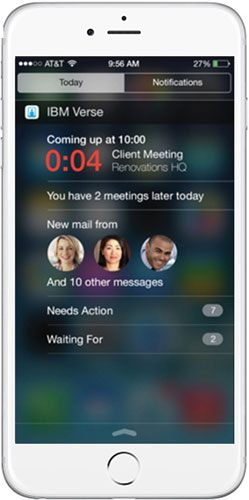Samsung's Next Galaxy Phone Could Have Siri-Like Smarts
By David Jones
Nov 9, 2016 11:30 AM PT
Nov 9, 2016 11:30 AM PT
Samsung Electronics this week revealed plans to unveil its flagship Galaxy S8 mobile phone with a new digital assistant powered by AI. The assistant will be based on technology gained with Samsung's recent acquisition of Viv Labs.
 The plans call for Samsung to incorporate the AI into its family of electronics and appliances, ranging from mobile devices to wearable technology and home devices.
The plans call for Samsung to incorporate the AI into its family of electronics and appliances, ranging from mobile devices to wearable technology and home devices.Rhee Injong, CTO of Samsung's mobile communications business, was one of several executives who briefed Reuters on the plans.
Samsung may delay the introduction of the new phone past the Mobile World Congress in February, pushing the launch to as late as April, according to The Wall Street Journal. The company may add a button on the side of the S8 to launch the AI capabilities, similar to the buttons for launching Siri on Apple devices.
"Samsung is excited to begin integrating initial AI capabilities into its future products and we look forward to sharing further details at a later date," a spokesperson said in a statement provided to TechNewsWorld by company rep Ashley Wimberly.
Smart Enough?
In the aftermath of the Galaxy Note7 debacle, there is skepticism that Samsung's revelations concerning plans for a digital assistant amount to much more than face-saving hype."Personally, I'm a little wary about Samsung's ability to compete in this space," said Jitesh Ubrani, a senior research analyst at IDC.
"Without search and large amounts of user data, it will be quite difficult for Samsung to differentiate their AI from others," he told TechNewsWorld.
Amazon, Google, Microsoft and others have years of consumer data to build on artificial intelligence platforms that rely on learned user preferences to work in an optimal way, Ubrani noted. Their existing AI technologies include Amazon's Alexa, Google's Assistant and Microsoft's Cortana.
The proof will be in the pudding as to whether Samsung truly can assemble a new AI digital assistant that can compete, said industry analyst Jeff Kagan.
"There are many different versions of AI," he told TechNewsWorld. "Some are really advanced and interesting and real. Others are just there to let a company use the term to gain media attention.
"The real question is which is Samsung's AI?" Kagan asked.
Although Viv Labs is a startup, it is not a babe in the woods when it comes to AI systems. Its founders are Siri developer Dag Kittlaus, Adam Cheyer and Chris Brigham. The open AI technology they developed for Viv Labs is designed to allow third-party developers to integrate digital assistants using natural language into their apps.
Viv Labs will coordinate closely with Samsung but continue to operate essentially as an independent company.
Major Flameout
The plans come at a critical time for Samsung, which is working to extract itself from one of the biggest debacles in the history of mobile electronics. The company had to recall millions of Samsung Galaxy Note7 smartphones due to safety issues. Many phones overheated and some caught fire in dozens of incidents around the world.The devices were banned from commercial flights amid reports of some spontaneously catching fire on board aircraft. Samsung last week announced that it had collected 85 percent of the recalled devices and said it would be issuing a software upgrade that would limit the power from the unreturned phones' batteries to 60 percent.
Working with the U.S. Product Safety Commission, Samsung launched a recall of the defective phones, found a different supplier of lithium-ion batteries, and offered replacements.
However, some of the replacement devices were vulnerable to the same type of random overheating that had occurred in the original phones. Samsung issued a recall of all Note7s, including the replacement phones, and warned its customers to stop using them immediately.
While the recall of Galaxy Note7 phones was ongoing, the company found it necessary to recall another product: top-loading Samsung washing machines sold between 2011 and 2016.
The CPSC last week ordered the recall of 34 different models of Samsung washers -- a total of 2.8 million machines -- warning that the top of the machines might unexpectedly detach from the chassis, posing a potential risk to users.
There have been 733 reported episodes of strong vibrations or detachment of the tops of the machines and nine reported injuries, including a broken jaw and an injured shoulder.
The recalls were particularly damaging to Samsung, which had enjoyed a reputation of making high-quality products and being responsive to customers.
Samsung's brand reputation has been hurt by the recalls, but consumers will regain trust in the company over the long term, suggested Tuong Nguyen, principal research analyst at Gartner.
"I feel there is a little bit of weariness," he told TechNewsWorld, "but I think it's a short-term impact."




 Find the Best CRM Software for Your Needs
Find the Best CRM Software for Your Needs "This is a very important decision for the future of the Internet in India," said Barbara van Schewick, director of Stanford Law School's
"This is a very important decision for the future of the Internet in India," said Barbara van Schewick, director of Stanford Law School's 

